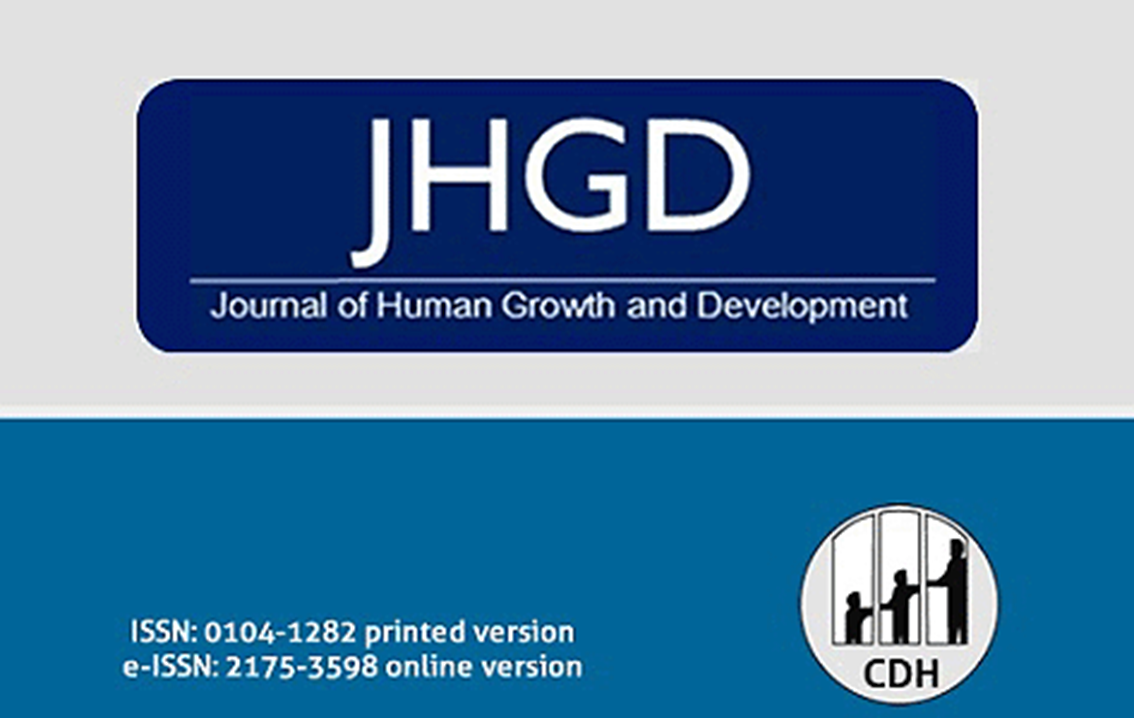Spatial and Spatio-temporal Analysis of Congenital Malformations of Nervous System in the State of Paraíba from 2010 to 2016
DOI:
https://doi.org/10.7322/jhgd.v29.9416Keywords:
spatial analysis, spatiotemporal analysis, cluster analysis, congenital defectsAbstract
Introduction: In Brazil, congenital malformation anomaly of the nervous system has been the most frequent among the anomalies. Knowledge of your geographical distribution both in space as throughout the time, can assist public managers in the decision-making process about the areas that must be prioritized for the monitoring of this disease. Objective: Detecting spatial and spatio-temporal clusters of congenital malformations of nervous system. Methods: An ecological study based on secondary data from the National Information System on Live Births in the period from 2010 to 2016 in the state of Paraíba. We estimated the spatial incidence ratios and applied circular and spatio-temporal Scan statistics to detect clusters with of abovementioned malformations. Results: The spatial pattern was different throughout the years of the occurrence of these malformations, since the spatial clusters were detected on different regions of the state, except in the years 2013 and 2015, which revealed a higher concentration in the central-west and northwest regions of the state. The retrospective spatio-temporal analysis revealed three clusters that persisted during the years of 2015 and 2016. Conclusion: The findings indicated the regions that must be prioritized for the monitoring of congenital malformations of nervous system in the state of Paraíba in time and space.
Downloads
References
2. Sadler TW. Langman: embriologia médica. 13 ed. Rio de Janeiro: Guanabara Koogan, 2016.
3. Silva HMC, Almeida KN, Braga MB, Lago EA, Pessoa LT, Silva IP. Aspectos fisiológicos e sociais associados às alterações cromossômicas e malformações congênitas em gestações perimenopáusicas. Rev Enferm UFPI. 2015;4(1):61-7.
4. Andrade AM, Ramalho AA, Opitz SP, Martins FA, Koifman RJ. Anomalias congênitas em nascidos vivos. Rev Bras Promoç Saúde. 2017;30(3):1-11. DOI: http://dx.doi.org/10.5020/18061230.2017.6309
5. Canals A, Cavada G, Nazer J. Factores de riesgo de ocurrencia y gravedad de malformaciones congénitas. Rev Med Chile. 2014;142(11):1431-9. DOI: http://dx.doi.org/10.4067/S0034-98872014001100010
6. Bolla BA, Fulconi SN, Baltor MRR, Dupas G. Cuidado da criança com anomalia congênita: a experiência da família. Esc Anna Nery. 2013;17(2):284-90. DOI: http://dx.doi.org/10.1590/S1414-81452013000200012
7. Reis LV, Araújo Júnior E, Guazzelli CAF, Cernach MCSP, Torloni MR, Moron AF. Anomalias congénitas identificadas ao nascimento em recém-nascidos de mulheres adolescentes. Acta Med Port. 2015;28(6):708-14.
8. Westphal F, Fustinoni SM, Pinto VL, Melo PS, Abrahão AR. Associação da idade gestacional com a opção pela interrupção da gravidez de fetos com anomalias incompatíveis com a sobrevida neonatal. Einstein. 2016;14(3):311-6. DOI: http://dx.doi.org/10.1590/S1679-45082016AO3721
9. Departamento de Informática do Sistema Único de Saúde (DATASUS). Informações de saúde (Tabnet). Estatísticas vitais. Nascidos vivos [cited 2018 oct 28] Available from: http://tabnet.datasus.gov.br/cgi/ deftohtm.exe?sinasc/cnv/nvuf.def.
10. Cardoso GC, Oliveira MZ, Paixão-Côrtes VR, Castilla EE, Schuler-Faccini L. Clusters of genetic diseases in Brazil. J Community Genet. 2019;10(1):121-8. DOI: http://doi.org/10.1007/s12687-018-0369-1
11. Magalhães GB. O uso do geoprocessamento e da estatística nos estudos ecológicos em epidemiologia: o caso da dengue em 2008 na região metropolitana de Fortaleza. Rev Bras Geografia Médica Saúde. 2012;8(15):63-77.
12. Goodchild MF. Geographical data modeling. Comput Geosci. 1992;8(4):401-8. DOI: https://doi.org/10.1016/0098-3004(92)90069-4
13. Lima LMM, Melo ACO, Vianna RPT, Moraes RM. Análise espacial das anomalias congênitas do sistema nervoso. Cad saúde colet.2019;27(3):257-63. http://dx.doi.org/10.1590/1414462x201900030313
14. Kulldorff M, Nagarwalla N. Spatial disease clusters: detection and inference. Stat Med. 1995;14(8):799-810. DOI: https://doi.org/10.1002/sim.4780140809
15. Kulldorff M. A spatial scan statistic. Commun Stat Theory Meth. 1997;26(6):1481-96. DOI: https://doi.org/10.1080/03610929708831995
16. Kulldorff M, Athas WF, Feurer EJ, Miller BA, Key CR. Evaluating cluster alarms: a space-time Scan statistic and brain cancer in Los Alamos, New Mexico. Am J Public Health. 1998;88(9):1377-80. DOI: https://doi.org/10.2105/ajph.88.9.1377
17. Kulldorff M. Prospective time periodic geographical disease surveillance using a scan statistic. J R Stat Soc Ser A Stat Soc. 2001;164(1):61-72. DOI: https://doi.org/10.1111/1467-985X.00186
18. World Health Organization (WHO). Epidemiological Alert. Neurological syndrome, congenital malformations, and Zika virus infection. Implications for public health in the Americas. Geneva: 2015.
19. Barreto ML, Barral-Netto M, Stabeli R, Almeida-Filho N, Vasconcelos PFC, Teixeira M, et al. Zika virus and microcephaly in Brazil: a scientific agenda. Lancet. 2016;387(10022):919-21. DOI: https://doi.org/10.1016/S0140-6736(16)00545-6
20. Schuler-Faccini L, Ribeiro EM, Feitosa IML, Horovitz DDG, Cavalcanti DPC, Pessoa A, et al. Possible Association Between Zika Virus Infection and Microcephaly - Brazil, 2015. MMWR Morb Mortal Wkly Rep. 2016;65(3):59-62. DOI: http://dx.doi.org/10.15585/mmwr.mm6503e2
21. Groisman B, Gili J, Giménez L, Poletta F, Bidondo MP, Barbero P, et al. Geographic clusters of congenital anomalies in Argentina. J Community Genet. 2017;8(1):1-7. DOI: https://doi.org/10.1007/s12687-016-0276-2
22. Gili JA, Poletta FA, Pawluk M, Gimenez LG, Campaña H, Castilla E, et al. High birth prevalence rates for congenital anomalies in South American regions. Epidemiology. 2015;26(5):e53-5. DOI: https://doi.org/10.1097/EDE.0000000000000345
23. Orioli IM, Camelo JSL, Rittler M, Castilla EE. Sentinel phenotype for rubella embryopathy: time-space distribution in Brazil. Cad Saude Publica. 2011;27(10):1961-8. DOI: http://dx.doi.org/10.1590/S0102-311X2011001000009
24. Poletta FA, Castilla EE, Orioli IM, Lopez-Camelo JS. Regional analysis on the occurrence of oral clefts in South America. Am J Med Genet A. 2007;143A(24):3216-27. DOI: https://doi.org/10.1002/ajmg.a.32076
25. Arroyo LH, Yamamura M, Protti-Zanatta ST, Fusco AP, Palha PF, Ramos AC, et al. Identificação de áreas de risco para a transmissão da tuberculose no município de São Carlos, São Paulo, 2008 a 2013. Epidemiol Serv Saúde. 2017;26(3):525-34. DOI: http://dx.doi.org/10.5123/s1679-49742017000300010
26. Deng T, Huang Y, Yu S, Gu J, Huang C, Xiao G, et al. Spatial-temporal clusters and risk factors of hand, foot, and mouth disease at the district level in Guangdong Province, China. PloS one. 2013;8(2):e56943. DOI: https://doi.org/10.1371/journal.pone.0056943
27. Roche LM, Niu X, Stroup AM, Henry KA. Disparities in Female Breast Cancer Stage at Diagnosis in New Jersey: A Spatial-Temporal Analysis. J Public Health Manag Pract. 2017; 23(5):477-86. DOI: https://doi.org/10.1097/PHH.0000000000000524
28. Olfatifar M, Karami M, Hosseini SM, Parvin M, Moghimbeigi A, Kousha A, et al. Space-time Analysis of Breast Cancer and Its Late-stage Cases among Iranian Women. Iran J Public Health. 2017;46(10):1413-21.
29. Kliegman R, Stanton BMD, Geme JS, Schor NF. Nelson: tratado de pediatria. 20 ed. Elsevier, 2017.






